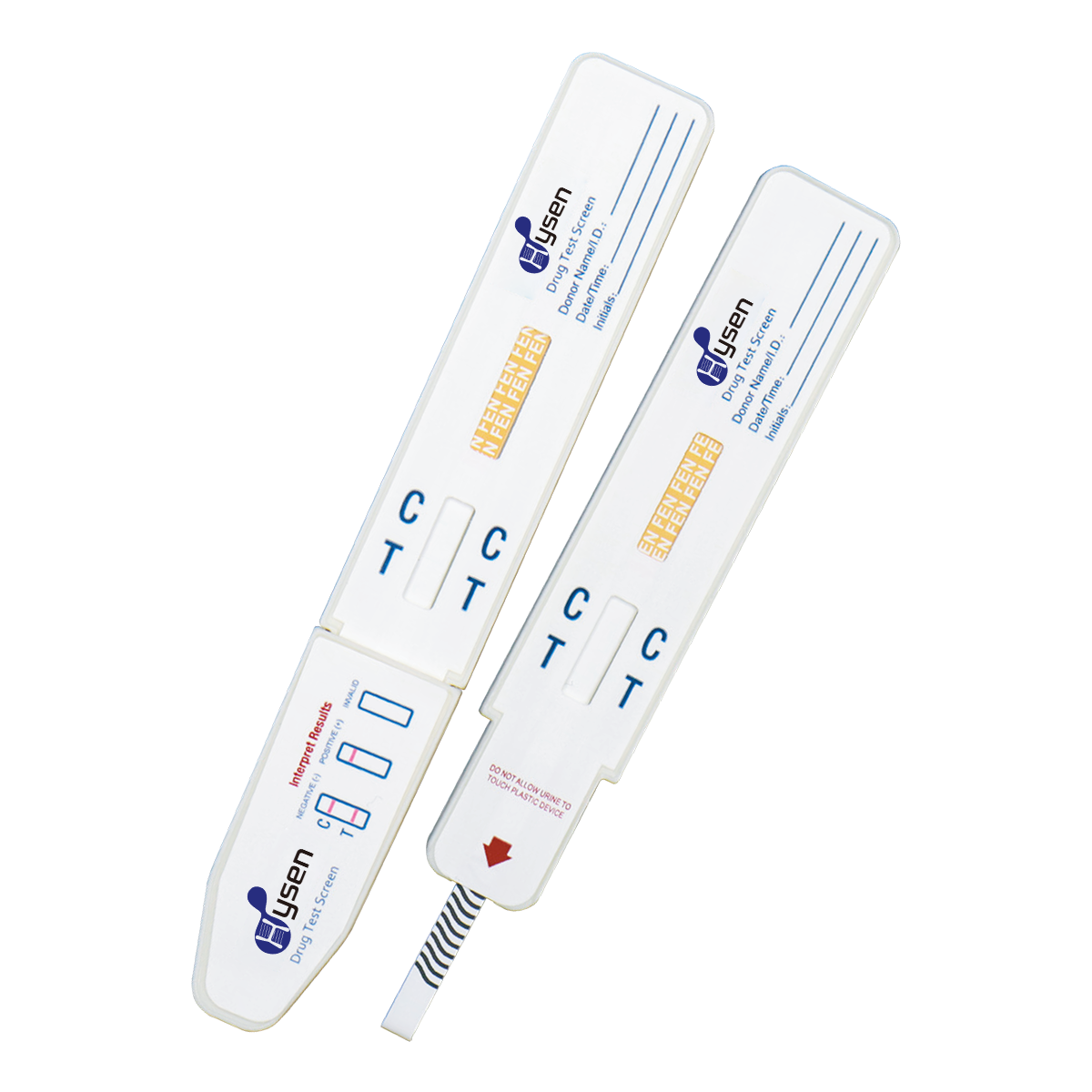Understanding Cutoff Levels in Drug Testing
Cutoff levels in drug testing play a crucial role in determining whether a test result is reported as positive or negative. These levels represent the minimum concentration of a drug or its metabolites that must be present in a specimen for the result to be considered positive. Different drug testing companies may employ varied cutoff levels, which can lead to discrepancies in test outcomes. It's essential for stakeholders, including employers, legal professionals, and healthcare providers, to understand how these levels are set and why they may differ across testing methods.
Importance of Cutoff Levels
Cutoff levels serve as the threshold that distinguishes between incidental contact or environmental exposure and actual substance use. By setting a minimum concentration, testing companies ensure that trace amounts of drugs do not result in false positives. This is particularly important in legal and workplace settings, where a positive drug test can have significant consequences.
Screening vs. Confirmation Cutoffs
Drug testing typically involves two stages: initial screening and confirmation. Screening cutoffs use methods like immunoassay to identify presumptive positives. These initial results are then subjected to confirmation testing using more precise techniques such as liquid chromatography-mass spectrometry (LC-MS/MS). The confirmation cutoff level is usually higher, ensuring that only true positives are reported.
Variation Across Different Testing Methods
Drug testing companies utilize various methods to analyze specimens, including urine, blood, hair, and sweat. Each method has unique characteristics that influence the appropriate cutoff levels.
Urine and Blood Testing
Urine testing is one of the most common methods due to its ease of collection and analysis. The cutoff levels for urine tests are guided by federal standards to ensure consistency across the industry. Blood tests offer a more immediate snapshot of drug use, but they require more stringent cutoff levels to account for the higher precision of results.
Hair and Sweat Testing
Hair and sweat tests provide a longer detection window, capturing drug use over several weeks or months. These methods generally have lower cutoff levels because they reflect cumulative exposure rather than momentary ingestion. The variation in sample type and collection techniques can result in differing cutoff requirements between testing companies.
Factors Influencing Cutoff Levels in Laboratories
The determination of cutoff levels depends on various factors, from regulatory guidelines to the type of drug being tested. Laboratories must calibrate their instruments carefully to maintain accuracy and reliability.
Regulatory Guidelines and Standards
Federal and state regulations often dictate the baseline cutoff levels for drug testing. Laboratories must adhere to these standards while also considering the specific needs of their clients. Wholesale suppliers and manufacturers sometimes require customized cutoff levels for specialized testing panels.
Sample Type and Drug Metabolites
The nature of the sample—be it urine, blood, hair, or sweat—affects cutoff levels. Additionally, the presence of drug metabolites can alter the interpretation of test results. Certain drugs require the identification of both the parent compound and its metabolites to confirm a positive result, thus influencing cutoff thresholds.
The Role of Confirmation Testing
Confirmation testing is essential for ensuring the accuracy of drug test results. Beyond initial screening, confirmation methods provide a more detailed analysis to verify the presence of a drug.
Advanced Analytical Techniques
Techniques such as LC-MS/MS and gas chromatography-mass spectrometry (GC-MS) are used to confirm positive results. These methods can accurately differentiate between structurally similar compounds, minimizing the risk of false positives.
Implications for Testing Companies
Testing companies must balance sensitivity and specificity when setting cutoff levels. The goal is to reduce false positives without missing genuine cases of drug use. This is particularly important for suppliers and manufacturers who rely on accurate testing for compliance and safety assurance.
Challenges of False Positives and Negatives
False positives and negatives in drug testing can have significant repercussions, affecting employment, legal outcomes, and personal reputations. These challenges underscore the importance of precise cutoff levels and thorough testing procedures.
Mitigating False Positives
False positives can occur due to cross-reactivity with over-the-counter medications or certain foods. Testing companies must establish robust confirmation processes to verify initial positive results, thereby protecting individuals from unwarranted sanctions.
Addressing False Negatives
False negatives may arise when cutoff levels are set too high, failing to detect meaningful levels of drug use. Laboratories must continuously review and adjust their thresholds to capture accurate data, especially for new and emerging substances.
Legal Implications of Varied Cutoff Levels
The variability of cutoff levels across different testing companies can lead to legal challenges, as outcomes might differ based on the laboratory used.
Courtroom Considerations
In legal settings, the reliability and consistency of drug test results are crucial. When deciding on sanctions or rehabilitation treatment, judges and attorneys must consider the differences in cutoff levels and their impact on test outcomes.
Standardization Efforts
Efforts to standardize cutoff levels across the industry aim to reduce discrepancies and provide equitable evaluation of drug use. Regulatory bodies continue to work towards more uniform guidelines that testing companies can follow.
The Impact of Drug Metabolites
Understanding the role of drug metabolites is vital for accurately interpreting drug test results. Metabolites can provide additional evidence of drug use and influence the cutoff levels set by laboratories.
Identification of Metabolites
Some drugs, especially those with long half-lives, may not be present in the parent form in a specimen. Testing for specific metabolites ensures comprehensive detection and helps differentiate between active use and incidental exposure.
Adjusting Cutoffs for Metabolites
Cutoff levels may be adjusted to account for the unique characteristics of drug metabolites. For certain drugs, the presence of a metabolite is required for a positive confirmation, demanding precise calibration from testing manufacturers and suppliers.
Industry Practices and Drug-Free Workplace Policies
Employers seeking to maintain drug-free workplaces must navigate the complexities of drug testing, including understanding and selecting appropriate cutoff levels.
Best Practices for Employers
Employers should work with reputable drug testing companies that obey industry standards and offer transparent cutoff level policies. Engaging with a reliable wholesale supplier or manufacturer ensures access to consistent and accurate testing solutions.
Crafting Effective Workplace Policies
Comprehensive workplace policies should outline the drug testing procedures, including the cutoff levels being used. Clear communication with employees ensures transparency and fairness in addressing potential substance use issues.
Advancements in Drug Testing Technology
Technological advancements have significantly improved the accuracy and reliability of drug testing. New methods offer enhanced capabilities for detecting a wide range of substances.
Enhanced Detection Methods
Innovations in analytical techniques have allowed testing companies to identify drugs at lower concentrations, leading to more nuanced cutoff levels. These advances help suppliers and manufacturers provide more precise testing solutions.
Future Directions
As technology continues to evolve, drug testing companies are likely to adopt even more sophisticated methods. This progress may lead to further standardization of cutoff levels and improved detection accuracy.
Communicating Results to Stakeholders
The interpretation and communication of drug test results are critical for ensuring the information is understood by all stakeholders, including employers, employees, and legal professionals.
Understanding Positive and Negative Outcomes
Reading a drug test report involves more than identifying a positive or negative result. Stakeholders need to grasp the nuances of what these terms signify and how they are determined by cutoff levels.
Clear Reporting Practices
Testing companies should adopt clear and consistent reporting practices to facilitate understanding among all parties involved. Detailed notes on metabolites and concentration levels can aid in correctly interpreting results.
Hysen Provide Solutions
Hysen offers comprehensive solutions for drug testing, helping clients navigate the complexities of cutoff levels and detection methods. Our services include access to state-of-the-art testing technology and expert consultation to ensure accurate and reliable results. As a trusted supplier and manufacturer, we are committed to providing superior testing solutions that cater to the specific needs of our clients. Whether you are looking to establish a drug-free workplace policy or require detailed analysis for legal purposes, Hysen has the expertise and resources to support your objectives.
User hot search: drug Cut-off
Post time: Aug-06-2025
















